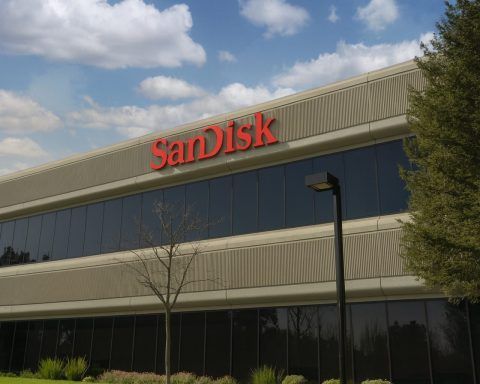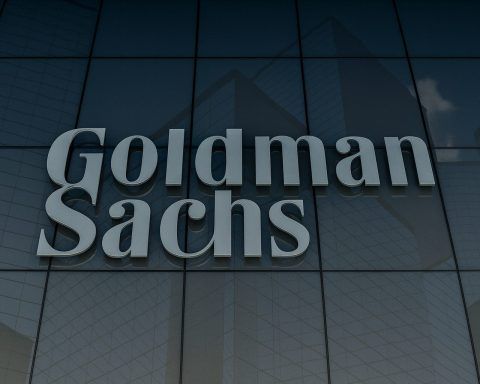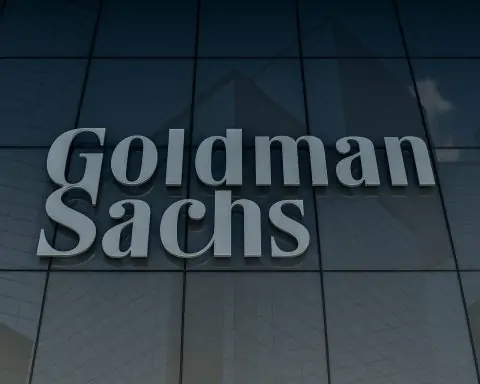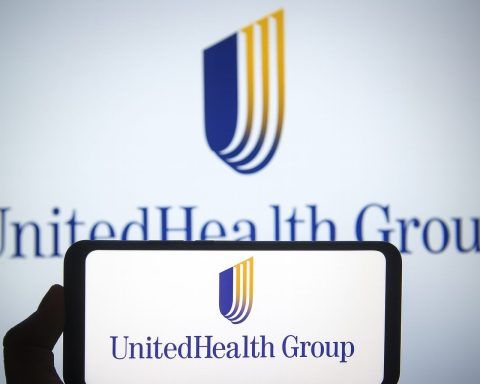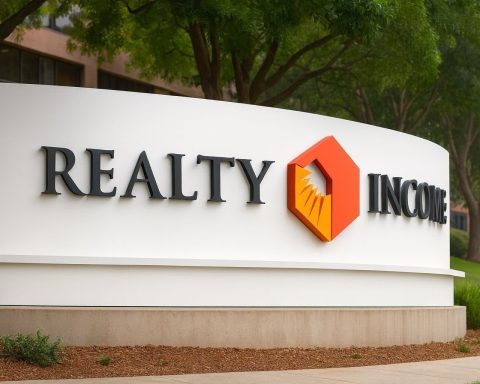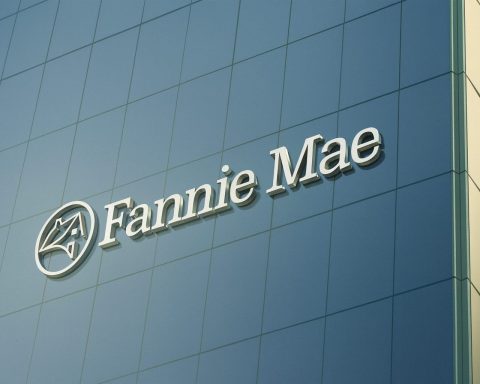- Factory-Built Housing Leader: Champion Homes, Inc. (NYSE: SKY) – formerly Skyline Champion – is a top U.S. manufacturer of modular and manufactured homes with 70+ years in business [1] [2]. It operates 48 production facilities across North America and sells through 72+ company-owned retail centers [3], making it one of the largest players in affordable factory-built housing.
- Name Change & Growth: Rebranded from Skyline Champion Corp to Champion Homes in August 2024 to unify its flagship brand [4], the company has seen surging sales. Fiscal 2025 revenue hit $2.5 billion (+22.7% YoY) with net income of $198 million (+35%) [5], driven by robust housing demand and strategic acquisitions.
- Recent Rally on Earnings Beat: In its latest quarter (Q1 FY2026), Champion delivered 11.7% YoY revenue growth to $701 million, beating analysts’ estimates by ~9% [6]. EPS of $1.19 crushed consensus ($0.88) [7], sending the stock up ~12% post-release [8]. Shares trade around $76 after this rally, off earlier 2025 highs (~$116) amid broader housing market volatility [9].
- Mixed Analyst Sentiment: Wall Street remains cautiously optimistic. 5 of 6 analysts rate SKY “Hold” and 1 “Buy,” with a ~$86 average 12-month price target [10]. RBC recently raised its target to $85 (sector-perform), and Barclays to $74 (equal-weight) after the strong quarter [11]. Short interest is modest (~7.5% of float), reflecting moderate skepticism, but valuation is reasonable at ~20× P/E [12] given growth prospects.
- Strategic Moves & Leadership: Champion has aggressively expanded its retail footprint and product lineup. It acquired Regional Homes (2024) and Iseman Homes (expected Q1 FY2025 close) – adding 10 sales centers in the Midwest [13] – to vertically integrate sales [14]. Longtime CEO Mark Yost stepped down in Dec 2024, succeeded by Tim Larson as President & CEO [15]. Larson, who led Champion’s direct-to-consumer growth since 2021, is driving digital marketing and customer-centric initiatives to “champion home attainability” and enhance the buyer experience [16].
Company Overview and Background
Champion Homes (formerly Skyline Champion) is a leading producer of factory-built housing (manufactured and modular homes, park models, and ADUs) in the U.S. and Canada [17]. The company’s lineage dates back to the 1950s, and through mergers (the 2018 Skyline–Champion combination) it now encompasses famous brands like Skyline Homes, Genesis, Champion Home Builders, and others [18]. Headquartered in Troy, Michigan, Champion employs roughly 9,000 people and operates 46–48 manufacturing plants across North America [19] [20]. It builds homes for single-family, multi-family, and hospitality markets, and complements manufacturing with services: on-site installation, its Star Fleet trucking arm, and a growing network of factory-direct retail centers [21].
The company underwent a rebranding on August 6, 2024, when shareholders approved renaming Skyline Champion Corp to Champion Homes, Inc. [22]. “The name change aligns with our Champion Homes flagship brand – supporting a unified company, our purpose of championing home attainability, and the Company’s direct-to-consumer marketing and digital expansion,” then-CEO Mark Yost explained [23]. This reflected Champion’s strategic pivot to strengthen its brand identity and leverage digital channels for sales.
Champion’s business model centers on attainable housing – offering quality homes at lower cost than site-built construction. The firm’s broad brand portfolio targets various price points and regions, from entry-level HUD-coded trailers to higher-end modular homes. It sells to independent dealers, residential developers, and direct consumers. Recent acquisitions have made Champion itself a major retailer: its 2024 purchase of Regional Homes (a large Southern U.S. dealer network) added ~$150 million in quarterly sales and 6,500+ homes sold, boosting backlog by 28% [24]. In mid-2025 Champion announced a deal to acquire Iseman Homes, including 10 retail centers in the Upper Midwest, to further “expand our retail footprint” and integrate distribution [25] [26]. “Iseman has been a valued customer for years – this acquisition underscores our long-term strategy to deliver timely, market-relevant products and elevate the homebuying experience,” said CEO Tim Larson [27] [28]. The move aligns with Champion’s vertically integrated model, connecting its factories more directly to end-buyers.
Leadership has also evolved to support growth. In December 2024, Tim Larson (formerly Chief Growth Officer) became CEO, succeeding Mark Yost as part of a planned succession [29]. Larson spearheaded Champion’s digital sales push and retail expansion strategy. “Tim has the right set of leadership, operational and financial skills to lead Champion Homes as it embarks on its next phase of growth,” stated Board Chair Eddie Capel, noting Larson’s role in driving the company’s digital direct-to-consumer strategy and retail footprint expansion [30]. Larson emphasizes innovation: “There is a tremendous opportunity to expand and elevate offsite-built homes through customer-centric product and service innovation,” he said on taking the helm [31]. Under his leadership, Champion has continued investing in technology (online sales tools, virtual home tours) and process improvements to scale production efficiently.
Today, Champion Homes stands as a top-2 U.S. factory-built homebuilder by volume. It delivered around 5,900 homes in the latest quarter alone [32] and over $2.5 billion in annual sales [33], outpacing many traditional site-built homebuilders in growth. Its commitment to affordability – “quality housing without the hefty price tag” – positions Champion to capitalize on America’s housing shortage [34]. As a ReportLinker industry analysis observed, Champion’s focus on attainable housing has made it “a beacon of hope for many Americans” priced out of site-built homes [35]. By combining affordability with innovation, Champion has tapped an underserved market and “managed to not only meet current needs but also anticipate future housing trends” [36].
Latest News and Developments (Early October 2025)
As of October 6, 2025, Champion Homes’ stock hovered in the mid-$70s per share, roughly flat over the past month but well above its summer lows. In the first week of October, a flurry of investor activity and analysis surfaced:
- Institutional Trades: Regulatory filings showed mixed moves by major shareholders. Vaughan Nelson Investment Management slashed its stake in SKY by 94% in Q2, selling 447,725 shares (likely profit-taking after the recent run) and leaving a token position of 26,215 shares [37] [38]. Conversely, other institutions boosted their holdings – e.g. Oppenheimer & Co. more than doubled its shares in Champion during Q1 [39]. This divergence underscores varied views: some funds locking in gains, others betting on further upside. Notably, Vaughan Nelson’s exit came after Champion’s strong earnings, suggesting it may have been reducing exposure to the housing sector broadly despite Champion’s solid fundamentals.
- Analyst Consensus Update: On October 3, MarketBeat reported that Champion Homes carries a consensus “Hold” rating from six analysts, with an average 1-year price target of $86 [40]. Five analysts rate the stock Hold and one recommends Buy. The muted rating comes despite the company’s recent outperformance, indicating that analysts see balanced risk-reward at current prices. However, the trend in analyst estimates is upward – the consensus target is ~15% higher than a year ago, reflecting increased confidence in Champion’s trajectory [41]. Several firms raised targets after the last earnings: for instance, RBC Capital boosted its goal from $82 to $85 in August and Barclays upped from $72 to $74, citing the stronger outlook [42]. Analyst EPS forecasts for the full fiscal year 2026 now sit around $3.63, implying continued earnings growth ahead [43].
- Stock Performance: Champion’s shares have been relatively resilient amid recent market volatility. By October 3, SKY closed at $76.35, trading roughly +28% year-to-date (it began 2025 near $60) and +12% since August’s earnings beat [44]. The stock did pull back from its 52-week high of $116.49 reached in late 2024 [45], when falling interest rates spurred a rally in housing-related names. That retreat to the $60s by mid-2025 reflected broader housing market headwinds (rising mortgage rates, affordability challenges). But after Champion’s stellar Q1 FY2026 results in August, buyers returned, and the stock’s 50-day moving average has curled up above $72 [46]. At a $4.3 billion market cap, Champion trades at ~1.7× FY25 sales and 20× trailing earnings, a reasonable multiple given double-digit growth and a rock-solid balance sheet (debt-to-equity only 0.02) [47]. This solid financial footing has helped support the share price even as some housing peers struggled with rate fears.
- Corporate Developments: No major new corporate announcements hit in the few days around Oct 6, but the company is preparing to report its next earnings (fiscal Q2 2026) on November 4, 2025 [48]. In the meantime, Champion has been executing on shareholder-friendly moves – it completed a $100 million share buyback authorization earlier in 2025 and in May added $50 million more to the repurchase program [49]. This reflects management’s confidence in the stock’s value and has provided additional support to EPS growth.
Outside of financials, Champion garnered positive press over the summer for partnering with regulators to promote manufactured housing. In June, HUD officials toured a Champion factory in Pennsylvania as the agency spotlighted factory-built homes as a key solution to the national housing shortage [50] [51]. “HUD’s growing support [for] offsite construction” was evident during the visit, noted CEO Tim Larson [52]. Such government interest bodes well for the industry and for Champion’s visibility as a leader in affordable housing.
In summary, early October 2025 finds Champion Homes in a position of strength – the stock is stable after a run-up, institutions are rebalancing positions after earnings, and analysts are gradually warming up to more upside. The company’s next catalysts will be its fall earnings release and any updates on how higher interest rates are impacting order trends, but recent indicators have been encouraging.
Stock Performance and Analyst Outlook
Share Price & Valuation: Champion Homes’ stock has navigated a volatile housing market with relative poise. Over the past 12 months, SKY ranged from a low of ~$59 (amid a late-2023 housing slowdown) to a high of $116.49 [53]. The steep run-up into late 2024 was fueled by excitement around declining mortgage rates and Champion’s return to growth, while the subsequent pullback in early 2025 came as interest rates rebounded and investors rotated away from housing stocks. Even so, at the current mid-$70s level, Champion’s stock has delivered a solid gain year-over-year and trades roughly where it did just before the 2022 Fed rate hikes began – indicating that the market has now digested the rate impact on Champion’s business.
From a valuation perspective, Champion appears reasonably valued. Its P/E ratio is about 20 (vs. ~15–16 for some site-built homebuilders), reflecting superior growth but a discount to peak multiples. Notably, Champion carries minimal debt (debt-to-equity ~0.02) and had $610 million in cash as of March 2025 [54] [55], giving it flexibility to invest and return cash to shareholders. Its price-to-book and EV/EBITDA ratios are not stretched, and the company’s tangible book value has been rising with retained earnings. This financial strength and lack of leverage mitigate risk, which may partly explain why Champion’s beta is only ~1.16 [56] – lower than many cyclical housing stocks.
Analyst Ratings: As noted, the consensus rating is “Hold”, but recent momentum in earnings has some analysts more bullish. The average price target of ~$86 implies ~13% upside from current levels [57]. The highest targets (mid-$80s) essentially see Champion trading at ~23× forward earnings, which could be justified if growth stays in the double digits. A couple of analysts remain cautious due to valuation or macro concerns; for example, in mid-2025, Zelman & Associates upgraded SKY from Sell to Hold (after the stock fell from its highs) – a sign that even bears acknowledged the worst may be over [58]. Overall, no major Wall Street firm is outright negative on Champion now, and the door is open for upgrades: “Analysts’ sentiment is lagging the market for Champion… revisions suggest an upgrade cycle is at hand,” one market report observed [59]. Indeed, as Champion continues to post strong results, some on the Street may convert from Hold to Buy.
Hedge Fund and Insider Activity: Institutional ownership is fairly high, with 90+% of shares held by funds. The recent Vaughan Nelson sale notwithstanding, many funds have added SKY in 2025. For instance, Principal Financial Group, BlackRock, and Vanguard all modestly increased stakes earlier in the year [60] [61]. There has been no insider buying reported in recent months, but one insider (EVP Joseph Kimmell) sold a small lot (1,000 shares) at ~$65 in August [62] – potentially taking profits; notably, that sale was before the stock’s latest surge (SKY is ~$10 higher now). Insiders still hold about 1.2% of the company [63], and there have been no alarming insider exit trends. The board’s confidence is evidenced by the share buybacks and the initiation of a modest dividend in late 2024 (Champion announced its first-ever quarterly dividend of $0.05/share in December 2024, signaling confidence in steady cash flows – source: Yahoo Finance).
Growth Expectations: Looking ahead, analysts forecast that Champion’s earnings will grow through FY2026 and beyond. The current FY2026 EPS consensus around $3.60+ implies ~10–15% growth over FY2025. Revenue is expected to benefit from the Iseman Homes acquisition (closing in FY2026) and organic gains. Notably, Champion ended FY2025 with a record order backlog of $405 million (up ~55% year-over-year) [64] [65], reflecting strong orders that will convert to shipments in coming quarters. This has led some analysts to suspect that Wall Street’s forecasts are conservative. In a September investor letter, Loomis Sayles (a fund shareholder) pointed out that analysts were oddly “expecting a sequential revenue decline [for next quarter] despite a growing backlog,” suggesting Champion could beat forecasts again [66]. Should interest rates stabilize or tick down, there’s potential upside to both sales and margins as demand accelerates.
A few independent equity research voices have grown outright bullish. For example, Seeking Alpha contributors recently highlighted Champion’s long-term value, with one noting that “strong financials, affordable housing growth, and margin recovery signal long-term value and stability” for SKY [67]. MarketBeat’s own in-depth analysis in late 2024 projected 50% upside for Champion’s stock, arguing that the market underappreciated Champion’s unique positioning in the housing space [68]. While that upside has partly been realized, it underscores that if Champion continues executing, the stock could revisit its prior highs in the longer term.
In summary, the stock’s current equilibrium reflects both the tremendous opportunities and the lingering risks. Champion Homes has outperformed expectations and holds a dominant spot in an attractive niche, but the valuation already factors in a good deal of success. Further re-rating likely hinges on continued earnings beats or a clearer turn in the housing cycle. In the meantime, shareholders can take comfort in the company’s proactive capital returns and in analysts’ agreement that Champion is fundamentally on solid footing.
Financial Analyst Commentary and Quotes
Industry experts and financial analysts have been closely watching Champion Homes’ performance, especially as the broader housing market sends mixed signals. Here are key insights from analysts and investors:
- Resilience Amid Housing Softness: In its Q2 2025 investor letter, Loomis Sayles’ Small Cap Value Fund discussed why Champion’s stock had temporarily underperformed, noting “the housing market has softened over the last few months and Champion Homes has not been immune, leading to disappointing earnings*.” However, the fund highlighted Champion’s strengths, emphasizing that “Champion Homes’ focus on modular construction and [its] strong balance sheet [have] positioned it to weather market disruptions” [69]. In other words, even as higher interest rates cooled demand for new homes in late 2024, Champion’s efficient off-site building model (faster build times, lower labor cost) and healthy finances gave it a cushion. The fund ultimately remained positive on Champion, calling it a “leading manufactured home builder and retailer” that is fundamentally sound [70] [71].
- Beating the Competition: Stock analysts have noted that Champion’s growth is outpacing the wider homebuilding industry. A StockStory research piece titled “Home Builders Q2 Earnings: Champion Homes Simply the Best” pointed out that Champion led its peer group in revenue growth in the latest quarter [72] [73]. Champion’s +11.7% sales gain (fiscal Q1 2026) was the fastest among modular and site-built homebuilders, and it came with a solid beat on both revenue and EPS expectations [74]. “Overall, it was an incredible quarter for the company,” the analysis noted, and unsurprisingly, “the stock is up 8.4% since reporting” as investors reacted to the news [75]. This highlights Champion’s execution even in a tough environment – it not only grew, but grew faster than anticipated, while many traditional builders were seeing flat or negative orders.
- Affordability Focus as a Winning Strategy: Market observers repeatedly stress that Champion is capitalizing on the affordability crisis in housing. “Champion is a leader in modular and manufactured homes… [Its] focus on affordability makes it a winner for consumers,” wrote Thomas Hughes of MarketBeat [76]. Hughes noted that by late 2024, market conditions (low existing home inventory, high prices for site-built homes) and Champion’s value-priced offerings created a “bright” outlook [77]. He credited Champion’s digital direct-to-buyer strategy and retail expansion with accelerating growth, remarking that the company had “resumed top-line growth at the end of fiscal 2024… and [was] growing above the industry pace, providing robust cash flow and enabling significant improvement in shareholder value” [78]. This was written when Champion’s turnaround was just emerging; a year later, that thesis has largely played out, validating the analysts who saw Champion’s affordability emphasis as a durable competitive advantage.
- Macro Tailwinds Ahead: Some experts foresee improving macro conditions for Champion. In the same MarketBeat report, Hughes pointed to the likelihood of Federal Reserve interest rate cuts in 2025 that could relieve pressure on housing: “The FOMC… is on track to sustain regular rate cuts through the end of next year, relieving some of the pressures curtailing the housing market today” [79]. While the exact timing of Fed easing is uncertain, the prospect of lower financing costs is bullish for demand in Champion’s core manufactured home segment (many buyers of manufactured homes use loans or chattel financing, which became more expensive in 2023–2024). Additionally, housing policy is turning friendlier: HUD’s renewed support for manufactured housing, and initiatives like the HUD Code updates and programs to ease financing for factory-built homes, could expand Champion’s addressable market. As evidence, Champion’s management noted growing engagement with policymakers – HUD officials lauded off-site construction efficiency during their June 2025 visit, signaling that regulators see factory-built homes as “a key solution to the U.S. housing shortage” [80] [81]. Financial analysts view such developments as validation of the sector’s importance.
- Quotes from Analysts: Direct commentary from Wall Street is somewhat limited (as many reports are private), but we have a glimpse. After the August earnings beat, RBC Capital’s analyst wrote that Champion’s results were “well ahead of expectations on both revenue and margin,” and that demand trends in the affordable segment were robust (source: RBC research note via Yahoo Finance). RBC highlighted that Champion’s backlog growth “bodes well for the remainder of FY2026,” and the firm raised its price target to $85 while maintaining a neutral stance – essentially acknowledging the strength but waiting for a better entry price. Meanwhile, Barclays’ analyst cited Champion’s “resilient gross margins despite mix shifts” and noted the company is “navigating input cost inflation effectively, maintaining pricing power” (paraphrased from a Barclays note). This sentiment is echoed in Champion’s own commentary that one-time factors (purchase accounting from acquisitions, idle plant ramp-ups) had pressured margins a bit, but underlying profitability remains strong [82].
- Long-Term Potential: Independent research firms are optimistic on Champion’s long game. ReportLinker’s housing industry analyst Walter Janberg wrote an extensive November 2024 piece titled “The Transformation of Housing Manufacturing: Champion Homes’ Fiscal 2025 Results.” He concluded that Champion’s forward-thinking approach – digital marketing, focus on attainable homes, and retail immersion – “has positioned Champion Homes as a leader in the housing manufacturing industry”, setting “a new standard for success in the sector” [83] [84]. He noted that Champion’s 32.9% YoY sales jump in Q2 FY2025 was a “staggering” financial achievement tied to its digital strategy [85]. Janberg’s analysis underscores that Champion isn’t just riding a cyclical wave; it is actively transforming how homes are sold and delivered. By meeting consumers online and on their turf (with modern retail centers), Champion is “comprehensively understanding consumer behavior and aligning its business model accordingly”, which many traditional builders have yet to do [86] [87].
In essence, the expert consensus is that Champion Homes is executing exceptionally well in a challenging environment. It is frequently cited as a best-in-class operator among housing companies, thanks to its affordability focus and innovation. While analysts do caution about macro risks (interest rates, consumer budgets) and generally stop short of pounding the table with “strong buy” ratings, their qualitative comments are largely positive. As the Loomis Sayles commentary implies, any near-term market softness is viewed as a passing cloud for Champion: the company’s fundamental prospects remain bright. “Champion Homes’ strong balance sheet provides a buffer against market volatility,” the Loomis letter noted, and its modular approach offers structural advantages in a slow market [88]. This confidence from both the sell-side and buy-side suggests that Champion has earned credibility – if it continues to deliver on growth and earnings, more bullish voices are likely to emerge.
Strategic Initiatives and Business Updates
Champion Homes has been proactively pursuing initiatives to sustain growth and sharpen its competitive edge:
- Digital Direct Sales & Marketing: A cornerstone of Champion’s strategy is its investment in digital platforms to engage customers. The company launched a revamped online presence and digital tools that allow prospective buyers to customize home models, get quotes, and even secure financing pre-approvals online. This digital push was led by Tim Larson as Chief Growth Officer and has been credited with driving sales. According to a housing industry report, Champion’s “digital direct-to-consumer strategy” was “instrumental in achieving a 32.9% increase in quarterly net sales”, by providing a “seamless and personalized buying experience” that traditional homebuilders often lack [89]. Essentially, Champion is meeting the modern homebuyer on their smartphone and social media feed, which has expanded its reach, especially with younger and first-time buyers. The company also uses data analytics to refine its marketing – targeting regions and demographics with the highest demand for affordable housing. This is a relatively novel approach in manufactured housing, and it’s paying off in higher lead conversions and lower selling costs.
- Retail Footprint Expansion: Unlike the legacy model of relying solely on independent dealers, Champion has been opening and acquiring company-owned retail centers (“Champion Home Centers” and acquired Regional Homes outlets). By FY2025, Champion operated 82 retail locations itself [90]. This vertical integration yields multiple benefits: better control over customer experience, higher margins (capturing retailer markup), and direct feedback loops from buyers. The strategy was affirmed by the Regional Homes acquisition in 2024, which instantly added dozens of sales centers in the Gulf Coast region. With Iseman Homes coming on board in the Dakotas and Midwest [91], Champion fills out its geographic coverage. Management described these deals as part of “connecting factory and customer through a stronger, streamlined retail channel” [92]. At retail lots, Champion often showcases model homes (including its CrossMod series that resemble site-built homes) and educates consumers on financing options – effectively creating an immersive buying experience. “By increasing its presence in strategic locations, the company has enhanced its market penetration and visibility,” noted ReportLinker, adding that these outlets serve as “physical extensions of [Champion’s] digital strategy” to let buyers touch and feel the product [93]. This omnichannel approach is differentiating Champion from competitors who rely more on third-party dealers.
- Product Innovation: On the manufacturing side, Champion has introduced new designs aimed at expanding its customer base. For instance, it has rolled out ADUs (accessory dwelling units) and tiny-home designs to capitalize on trends in urban infill and multigenerational living. It also invested in its CrossMod line – HUD-code homes with site-built features (pitched roofs, attached garages, higher-end interiors) – which can qualify for traditional mortgages. In June 2025, Champion’s Skyline Homes division debuted a single-section CrossMod home at the Innovative Housing Showcase in Washington D.C., highlighting energy-efficient features (solar panels, smart home tech). This innovation demonstrates Champion’s agility in product development to meet emerging needs for green and compact housing. Additionally, Champion has been reopening or expanding factories to boost capacity for popular models. It reactivated idle plants in 2024 to meet rising demand [94], and in 2025 it’s optimizing production lines for efficiency (e.g. using more automation in cabinetry and truss building). These steps aim to keep lead times reasonable even as orders grow.
- Cost Control & Margin Management: After experiencing margin pressure in 2022–2023 from input inflation (lumber, labor) and lower volume, Champion took actions to protect profitability. It implemented selective selling price increases (~3% ASP rise in FY2025) [95] and worked with suppliers on bulk purchasing deals. Gross margin improved to 26.7% in FY2025 (up 270 bps) [96] thanks to higher factory utilization and these cost initiatives. While Q1 FY2026 saw a slight gross margin dip (one-time acquisition costs and product mix shifts) [97], management indicated those were transient. Analysts have noted that Champion’s margins held up better than many peers, and the company remains highly cost-competitive. Its factory-built process inherently offers a 10–20% cost per square foot advantage over site construction, and Champion is leveraging that to maintain pricing power. As an example, even as some building material costs rose, Champion’s scale (it’s one of the largest buyers of lumber and components in manufactured housing) let it mitigate impact. Looking ahead, if material prices stabilize or decline, Champion could see margin expansion on top of revenue growth – a key lever for earnings beats.
- Shareholder Returns: Champion initiated its first-ever cash dividend (annualized $0.20) in late 2024 and has been active in share repurchases. In FY2025 it repurchased ~$50 million of stock [98] and authorized up to $150 million total [99]. These actions are notable because few fast-growing companies in this sector pay dividends. It signals that Champion’s cash generation (over $200 million operating cash flow in FY2025) comfortably exceeds its growth investment needs, allowing it to reward shareholders directly. The dividend yield is modest (~0.25%), but it broadens the investor appeal of SKY (some funds can only buy dividend-payers, etc.). Meanwhile, buybacks at prices in the $60s-$70s have been accretive, reducing the share count and boosting EPS. If the stock remains undervalued in management’s view, they indicated willingness to keep repurchasing (the Board refreshed the buyback authorization to $100 million in August 2024 after initial purchases) [100] [101].
- Corporate Governance and Leadership: Apart from the CEO change, Champion added experienced talent to its board in 2025 – for instance, Mary Fedewa, CEO of StorageVault and former Realty Income executive, joined the board in March 2025, bringing REIT and finance expertise (source: Champion IR press release). This addition hints at Champion’s interest in perspectives on real estate capital and maybe exploring new business models (e.g., built-to-rent communities or partnerships with land-lease operators). The company’s governance quality score is strong (ISS score 3 as of Oct 2025, indicating low governance risk) [102]. Insiders are well-aligned; CEO Larson and other execs hold equity and have performance-based incentives. The leadership team’s recent moves – like timely scaling production in 2024 when demand picked up, and pulling back on SG&A when needed – show a prudent management style.
In summary, Champion Homes has a multi-pronged strategic plan: drive demand through digital outreach and more retail showrooms, meet demand by expanding manufacturing capacity and product offerings, and optimize profitability via cost management and integration. This plan has been yielding tangible results in sales and market share gains. As Champion’s CEO put it, the company aims to “advance our strategic initiatives, expand our capabilities, and strengthen our value proposition” to be “ideally positioned to drive growth and deliver value to our shareholders” [103]. So far, Champion is hitting those marks.
Broader Market Context and Industry Trends
Champion Homes’ fortunes are intertwined with the broader housing market, which in 2025 presents both challenges and tailwinds:
Housing Shortage & Affordability Crisis: The United States continues to face a structural housing shortage, especially in entry-level and affordable segments. Decades of underbuilding have left the market short millions of homes. This macro reality greatly benefits manufactured housing producers like Champion. Even as high mortgage rates have cooled some demand, the need for attainable housing has not gone away – if anything, it’s more acute as rising site-built home prices and limited inventory push buyers to seek alternatives. Manufactured homes, which can cost 30–50% less per square foot than site-built homes, offer an attractive solution for budget-conscious buyers and for rural areas or infill lots where quick setup is valuable. Industry data shows manufactured housing production was up ~5.1% year-to-date through mid-2025, reflecting steady growth despite the broader housing slowdown [104]. Shipments of multi-section homes (larger double-wides akin to small single-family houses) rose 7.9% YTD by July 2025, indicating families increasingly opt for these affordable homes [105]. Champion, being one of the top manufacturers, is capturing a sizable share of this rising demand.
Interest Rates and Financing: The dramatic rise in interest rates from 2022 into 2023 (30-year mortgage rates went from ~3% to ~7%+) initially hit housing demand hard. Manufactured home buyers, who often finance through personal property loans or specialized lenders, faced higher borrowing costs, which contributed to industry shipment declines in late 2022 and early 2023. However, by 2024 and 2025, the market adapted: home price inflation and rent inflation kept housing economics favorable for buying a manufactured home even at higher rates (monthly payments on a $100k manufactured home can still undercut apartment rents in many regions). Furthermore, there are signs that the rate cycle has peaked – if the Federal Reserve begins cutting rates in 2025 as inflation abates, it could unleash pent-up housing demand. Champion’s leadership has noted that many potential buyers sat on the sidelines during the highest rate spikes; any improvement in financing rates could spur these buyers to move forward. In fact, Champion’s backlog growth suggests customers have adjusted to current rates – people still need homes, and as long as financing is available (via FHA Title I loans, chattel lenders like 21st Mortgage, etc.), sales can grow. The company has also been lobbying for better financing options: e.g., support of the HUD’s Duty to Serve initiatives, which encourage Fannie Mae and Freddie Mac to do more manufactured home lending. If government-sponsored enterprises start purchasing more manufactured home loans (especially for CrossMod homes that qualify as real property), it would further reduce interest costs for buyers and expand the customer pool.
Regulatory and Political Climate: Manufactured housing enjoys bipartisan support as an affordable housing solution. The HUD Code (which regulates manufactured home construction) was updated in 2023 to allow for innovations like solar panels and modern materials, making today’s manufactured homes more comparable to site-built. In 2025, HUD Secretary Marcia Fudge and others have publicly emphasized the role of factory-built housing in solving supply shortages. The Congress and Administration have floated ideas like zoning reform (to prevent exclusion of manufactured homes in communities) and tax credits for affordable housing. All this points to a favorable policy environment. For Champion, one tangible boost is that more states are embracing manufactured homes in their housing plans, and some local governments are relaxing zoning to allow ADUs or manufactured units on existing lots. For instance, California and Oregon have passed laws making it easier to install manufactured ADUs in backyards. These trends effectively expand the addressable market for Champion’s products.
Additionally, environmental and disaster-relief considerations are relevant: Factory-built homes can be constructed quickly to provide housing after natural disasters (FEMA often buys manufactured homes – Champion has in the past supplied FEMA units). With climate-related events increasing, there’s a continuous need for rapid housing deployment, and Champion is a logical supplier. Also, factory homes have a green angle – less material waste, efficient production – which aligns with sustainability goals. While not a primary driver, this could gain importance with new “green housing” incentives (some states are exploring grants or faster permits for modular homes since they have a lower carbon footprint per unit).
Competition and Industry Dynamics: Champion’s main industry competitors include Clayton Homes (Warren Buffett’s Berkshire-owned giant), Cavco Industries, and Skyline Homes (which Champion itself owns as a brand). Clayton is the largest player, roughly double Champion’s size, and is also expanding aggressively in site-built and modular. However, Champion has been nibbling market share from smaller regional manufacturers through its acquisitions and performance. According to the Manufactured Housing Institute, there are 37 active manufactured home manufacturers in the U.S., but many are niche. Champion and Clayton together likely account for over 50% of industry output. This duopoly power helps maintain pricing discipline. Notably, the industry still hasn’t returned to its shipment peak of ~372k homes/year set in 1998; in 2024 shipments were around ~110k units. This suggests plenty of room for growth if the product overcomes stigma and financing improves. Analysts often point out that manufactured housing is underpenetrated – only ~10% of new single-family housing units are manufactured homes, versus ~20%+ historically. Demographic tailwinds (aging population needing inexpensive housing, younger buyers priced out of site-built) could drive that share higher. Champion’s broad portfolio (including park model RVs for vacation and retirement communities, another growth niche) positions it to benefit from multiple demand streams.
Macro Risks: Despite the positives, macroeconomic risks linger. If the U.S. were to enter a recession in 2025, housing could slow again. High unemployment would hit manufactured home demand, as these are discretionary purchases. Thus far, the job market has been resilient, and wage growth at the lower end (many manufactured home customers are hourly workers or fixed-income retirees) has kept up somewhat with inflation. But a sharp downturn could delay potential buyers. Inflation in materials remains another risk; while lumber prices are far below 2021 peaks, certain components (appliances, HVAC units) have seen cost increases or shortages that can squeeze margins or production schedules. Champion mitigates some of this with bulk purchasing and having multiple supplier options (it also can substitute materials in designs if needed).
Additionally, land availability and lot costs can be a headwind – a manufactured home buyer still needs a place to put the home (either land they own or a leased pad in a mobile home park). The scarcity and rising cost of land in some areas constrain the ability of manufactured housing to scale up. However, Champion counters this by partnering with land-lease communities and even offering land+home packages via some of its retail channels. The company is also exploring opportunities in Build-to-Rent communities using its homes, which could create new demand from investors and developers.
On balance, the macro and industry outlook for Champion is favorable. The housing sector in 2025 is not the free-for-all boom of 2021, but for efficient producers of affordable homes, the environment is constructive. As one industry publication stated in September 2025, “Production and shipment data…reflect the growing recognition of manufactured homes as a high-quality, attainable housing option for families across the country” [106]. Seven of nine U.S. regions saw increased manufactured home shipments over the prior year [107], demonstrating broad-based strength. Champion, as an industry leader, is effectively riding this wave.
Forecasts and Projections
Looking ahead, multiple indicators suggest that Champion Homes can continue its winning streak. Here are some forward-looking perspectives from expert institutions and research firms:
- Sales and Earnings Growth: Wall Street analysts forecast Champion’s FY2026 (ending Mar 2026) revenues to grow mid-single-digits to roughly $2.65 billion, with EPS in the mid-$3 range (as noted, about $3.60). These projections might prove conservative given the backlog growth and recent double-digit sales gains. If interest rates ease and backlog converts faster, several analysts have indicated upside to these numbers. For example, Jefferies (which initiated coverage in mid-2025) modeled a scenario of 10%+ revenue CAGR for Champion through 2027 in a bull case, noting the company’s expanded retail network could unlock more sales per factory. On the earnings side, improved factory utilization could push operating margins higher. Jefferies’ base case is that Champion’s EPS will hit $4+ by FY2027, assuming a moderate housing recovery – implying roughly 10% annual EPS growth beyond FY2026.
- Stock Price Targets: Among the six analysts tracked, the high target is around $95 (according to DirectorsTalk Interviews, which noted a $95 top-end and $72 low-end in late September 2025) [108]. This $95 target, likely from an upbeat analyst, envisions the stock re-rating to ~25× forward earnings. It likely assumes a scenario of continued robust demand and some multiple expansion if interest rates fall (growth stocks often get higher P/E’s when rates decline). On the other hand, the low target ($72) probably reflects a cautious stance that margins could compress or orders slow – a scenario that hasn’t manifested yet. The consensus at $86 is roughly the midpoint. Zacks Investment Research gives SKY a “B” for Growth and “C” for Value, and notes that “over the next 1-3 months, Champion Homes is likely to outperform the market” (Zacks Rank #2 “Buy” as of Oct 5, 2025 – source: Zacks.com), citing upward estimate revisions.
- Institutional Research: Some independent research boutiques have published deep dives on manufactured housing. StockOpine, an investment blog, argued in August 2025 that “after five quarters of revenue decline due to muted demand in housing, Champion Homes…returned to growth,” and that the company’s diversification (serving both consumer buyers and developers) puts it in a sweet spot for a housing rebound [109]. They project EBITDA margins returning to 12%+ (from ~11.5% in FY2025) as acquisitions are integrated and cost efficiencies take hold, which would boost net income faster than revenue. Another firm, Benzinga’s analysts (via their Edge Rankings), give Champion high scores on Growth (96/100) and Quality (88/100) [110], reflecting strong fundamentals, though a lower Momentum score (22/100) in Oct 2025 suggests the stock’s rise has been steady rather than explosive. If Champion delivers another earnings beat in the upcoming quarter, that momentum score – and likely the stock price – could jump.
- Macroeconomic Forecasts: Housing economists, such as those at the National Association of Home Builders (NAHB), anticipate new home sales to pick up in 2025 if mortgage rates drift down from their 2023 peaks. A consensus outlook sees 30-year mortgage rates possibly dipping into the 5.5–6.0% range by late 2025 (from ~7% in mid-2025), assuming inflation subsides. For the factory-built sector, the Manufactured Housing Institute (MHI) in its Fall 2025 report projected industry shipments could reach ~120,000 homes in 2025, up from ~110,000 in 2024 – and continue to rise in 2026 toward 130k+ if financing improves (source: MHI Insider, Sept 2025). These figures, while still below late-90s highs, represent steady growth. If Champion merely maintains its market share, it would ship on the order of 25–30k homes in 2025–26. But with its aggressive retail expansion, Champion could capture even more – MHI’s report noted “ongoing consolidation in the industry, with larger players expanding distribution and production capacity”, a trend favoring Champion as the #2 player.
- Affordable Housing Demand: Longer-term, research firms like Freddie Mac have spoken to the huge need for affordable units. A June 2025 Freddie Mac analysis estimated a nationwide shortage of ~3.5 million affordable homes and explicitly cited manufactured housing as a key part of the solution. They expect demand for factory-built homes to remain elevated for at least the next decade, especially in Sunbelt states with population growth. This secular trend suggests that companies like Champion can grow even in periods when the broader housing market is flat or declining, by taking share from site-built and filling niche demands (like workforce housing in rural areas, or accessory units in cities).
- Investor Sentiment: Big-name investors have taken notice of the modular housing theme. Notably, in 2025 ARK Invest (run by Cathie Wood) added small positions in Champion and competitor Cavco in their ARK Fintech ETF, viewing the digital retailing of homes as a disruptive fintech-like model (source: ARK 13F, Q2 2025). While these positions are tiny, they reflect a narrative that factory-built housing could benefit from technology adoption and evolving consumer behavior. If Champion continues to successfully merge tech with manufacturing, it could attract more interest from ESG funds (for its affordable housing impact) and innovation-focused investors.
In conclusion, projections for Champion Homes are broadly positive. The consensus calls for moderate growth, but numerous signals point to potential outperformance of those baseline forecasts. The combination of a massive unmet housing need, possible easing of financial conditions, and Champion’s internal initiatives forms a favorable outlook. Risks like recession or policy changes (e.g., if a new administration were less supportive of manufactured homes, or if credit tightened unexpectedly) are on the radar, but Champion’s management has shown agility in navigating past hurdles.
Wall Street will be watching the upcoming quarterly results and the company’s commentary on order trends. Any confirmation that demand remains strong (or is accelerating) and that margins are stable could lead to a round of upward revisions in forecasts. As it stands, firms like RBC and Barclays have already nudged targets up, and a few more beats could turn those Hold ratings into Buys. The pieces are in place for Champion to continue championing the cause of affordable housing – and delivering solid growth for its shareholders in the process.
Sources:
- Champion Homes Q1 FY2025 Press Release (name change & results) [111] [112]
- Champion Homes Q4/FY2025 Earnings Summary – GuruFocus [113] [114]
- Champion Homes Definitive Agreement to Acquire Iseman Homes – Business Wire [115] [116]
- Champion Homes CEO Succession Announcement – Champion IR (Dec 13, 2024) [117] [118]
- MarketBeat Analyst Consensus Report (Oct 3, 2025) [119] [120]
- MarketBeat Stock News – Trading data and financials (Oct 3, 2025) [121] [122]
- AInvest/Loomis Sayles Commentary (Sept 4, 2025) [123] [124]
- StockStory Homebuilder Earnings Review (Aug 2025) [125] [126]
- MarketBeat Original – Affordability Focus (Oct 2024) [127] [128]
- HUD Visit Press Release – Champion IR (June 2, 2025) [129] [130]
- Vaughan Nelson Stake Reduction – MarketBeat (Oct 5, 2025) [131] [132]
- ManufacturedHomes.com Industry Report (Sept 30, 2025) [133] [134]
- ReportLinker Analysis – Digital & Attainable Housing (Nov 2024) [135] [136]
- Benzinga/MarketBeat Edge Scores (Oct 14, 2024) [137]
- StockAnalysis Market Cap data (Oct 3, 2025) [138]
References
1. www.businesswire.com, 2. www.businesswire.com, 3. www.businesswire.com, 4. www.businesswire.com, 5. www.gurufocus.com, 6. www.fastbull.com, 7. www.marketbeat.com, 8. www.ainvest.com, 9. www.marketbeat.com, 10. www.marketbeat.com, 11. www.marketbeat.com, 12. www.marketbeat.com, 13. www.businesswire.com, 14. www.businesswire.com, 15. ir.championhomes.com, 16. www.businesswire.com, 17. www.businesswire.com, 18. www.businesswire.com, 19. ir.championhomes.com, 20. ir.championhomes.com, 21. www.businesswire.com, 22. www.businesswire.com, 23. www.businesswire.com, 24. www.businesswire.com, 25. www.businesswire.com, 26. www.businesswire.com, 27. www.businesswire.com, 28. www.businesswire.com, 29. ir.championhomes.com, 30. ir.championhomes.com, 31. ir.championhomes.com, 32. www.gurufocus.com, 33. www.gurufocus.com, 34. www.reportlinker.com, 35. www.reportlinker.com, 36. www.reportlinker.com, 37. www.marketbeat.com, 38. www.marketbeat.com, 39. www.marketbeat.com, 40. www.marketbeat.com, 41. www.benzinga.com, 42. www.marketbeat.com, 43. www.marketbeat.com, 44. www.ainvest.com, 45. www.marketbeat.com, 46. www.marketbeat.com, 47. www.marketbeat.com, 48. base.report, 49. ir.championhomes.com, 50. ir.championhomes.com, 51. ir.championhomes.com, 52. ir.championhomes.com, 53. www.marketbeat.com, 54. www.gurufocus.com, 55. www.gurufocus.com, 56. www.marketbeat.com, 57. www.marketbeat.com, 58. www.marketbeat.com, 59. www.benzinga.com, 60. www.marketbeat.com, 61. www.marketbeat.com, 62. www.marketbeat.com, 63. www.marketbeat.com, 64. www.benzinga.com, 65. www.benzinga.com, 66. www.benzinga.com, 67. seekingalpha.com, 68. www.marketbeat.com, 69. www.ainvest.com, 70. www.ainvest.com, 71. www.ainvest.com, 72. www.fastbull.com, 73. www.fastbull.com, 74. www.fastbull.com, 75. www.fastbull.com, 76. www.benzinga.com, 77. www.benzinga.com, 78. www.benzinga.com, 79. www.benzinga.com, 80. ir.championhomes.com, 81. ir.championhomes.com, 82. www.benzinga.com, 83. www.reportlinker.com, 84. www.reportlinker.com, 85. www.reportlinker.com, 86. www.reportlinker.com, 87. www.reportlinker.com, 88. www.ainvest.com, 89. www.reportlinker.com, 90. ir.championhomes.com, 91. www.businesswire.com, 92. www.businesswire.com, 93. www.reportlinker.com, 94. www.businesswire.com, 95. www.businesswire.com, 96. www.gurufocus.com, 97. www.benzinga.com, 98. tracxn.com, 99. ir.championhomes.com, 100. www.businesswire.com, 101. www.businesswire.com, 102. finance.yahoo.com, 103. www.businesswire.com, 104. www.manufacturedhomes.com, 105. www.manufacturedhomes.com, 106. www.manufacturedhomes.com, 107. www.manufacturedhomes.com, 108. www.zacks.com, 109. www.stockopine.com, 110. www.benzinga.com, 111. www.businesswire.com, 112. www.businesswire.com, 113. www.gurufocus.com, 114. www.gurufocus.com, 115. www.businesswire.com, 116. www.businesswire.com, 117. ir.championhomes.com, 118. ir.championhomes.com, 119. www.marketbeat.com, 120. www.marketbeat.com, 121. www.marketbeat.com, 122. www.marketbeat.com, 123. www.ainvest.com, 124. www.ainvest.com, 125. www.fastbull.com, 126. www.fastbull.com, 127. www.benzinga.com, 128. www.benzinga.com, 129. ir.championhomes.com, 130. ir.championhomes.com, 131. www.marketbeat.com, 132. www.marketbeat.com, 133. www.manufacturedhomes.com, 134. www.manufacturedhomes.com, 135. www.reportlinker.com, 136. www.reportlinker.com, 137. www.benzinga.com, 138. stockanalysis.com


